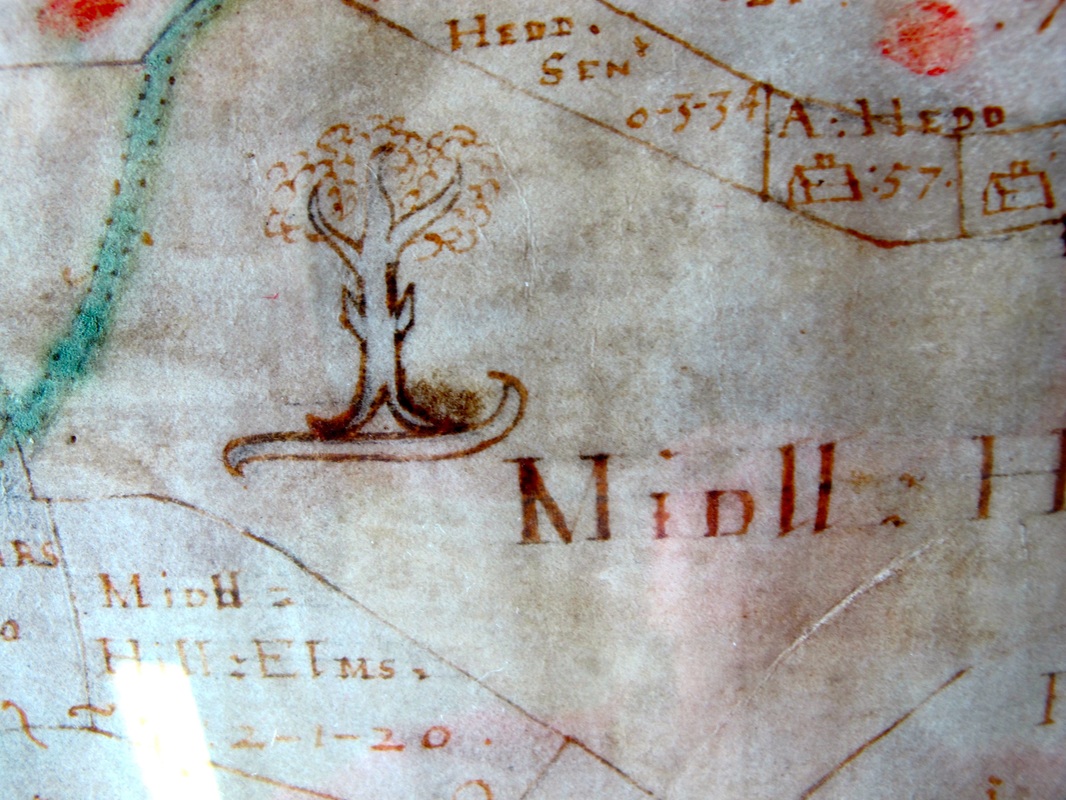Middlehill in Tudor & Stuart Times Alan Payne March 2016
Hill House (now called Jamie's) Farm is a fine early example of an open-hall house dating from the 1500s, probably the early Tudor period, with smoke-blackened timbers from the open fire and range.[1] It also has early medieval diamond-shaped, leaded green glass, a luxury in feudal times when shutters were the usual way of keeping out the weather, in the window of the solar (private bedroom).[2]
Hill House contrasts with nearby Slades Farm [3] which was developed a century later possibly when it became vacant after the death in July 1610 of the wife and infant daughter of John Love of Slade.[4]
The east end has an outbuilding for farm storage purposes and there are two barns from the 1700s associated with the farmhouse: one to the northeast and the other to the west of Inghalls Cottage.[5]
Both barns have saddle stones and one has an interesting cart entry. Most seed corn was stored within the house for security against human and vermin often in the roof spaces, later separate granaries were built.
Hill House contrasts with nearby Slades Farm [3] which was developed a century later possibly when it became vacant after the death in July 1610 of the wife and infant daughter of John Love of Slade.[4]
The east end has an outbuilding for farm storage purposes and there are two barns from the 1700s associated with the farmhouse: one to the northeast and the other to the west of Inghalls Cottage.[5]
Both barns have saddle stones and one has an interesting cart entry. Most seed corn was stored within the house for security against human and vermin often in the roof spaces, later separate granaries were built.
A medieval tree of life was a highly symbolic religious image. It was a tree connecting heaven and earth, rooted in the earth and spreading its branches into the ether. In Renaissance times it changed significance to become intertwining vine branches for eternal union of a man and woman, two souls growing together as one.
References
[1] See Historic Buildings
[2] Pamela M Slocombe, Medieval Houses of Wiltshire, 1992, Wiltshire Buildings Record, p.63
[3] John Field, A History of English Field-names, 1993, Longman, p.47 Slade wasn’t a person but a farmhouse in a valley, often in marshy land or marginal land used only when resources were scarce.
[4] Clare Higgens, Box Wiltshire: An INtimate History, 1985, Downland Press, p.56
[5] See Historic Buildings
[1] See Historic Buildings
[2] Pamela M Slocombe, Medieval Houses of Wiltshire, 1992, Wiltshire Buildings Record, p.63
[3] John Field, A History of English Field-names, 1993, Longman, p.47 Slade wasn’t a person but a farmhouse in a valley, often in marshy land or marginal land used only when resources were scarce.
[4] Clare Higgens, Box Wiltshire: An INtimate History, 1985, Downland Press, p.56
[5] See Historic Buildings

